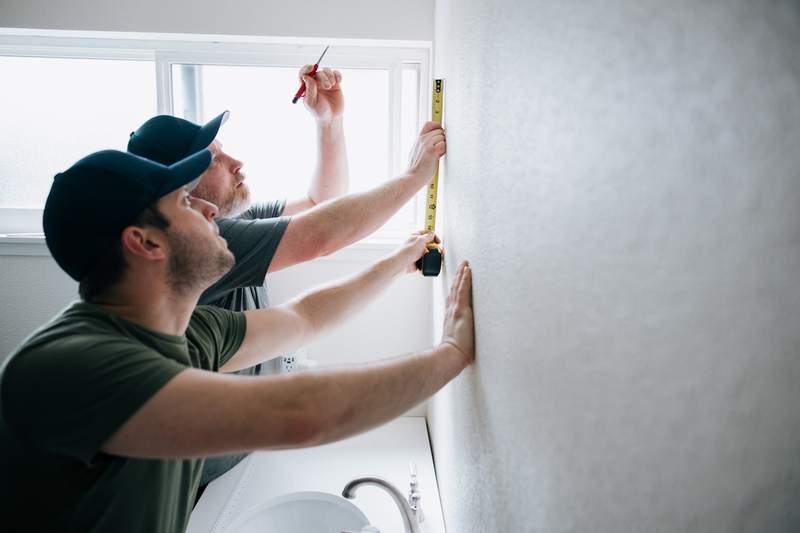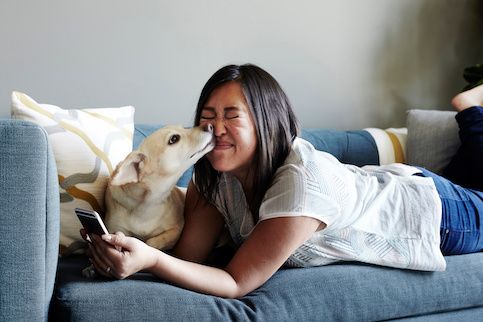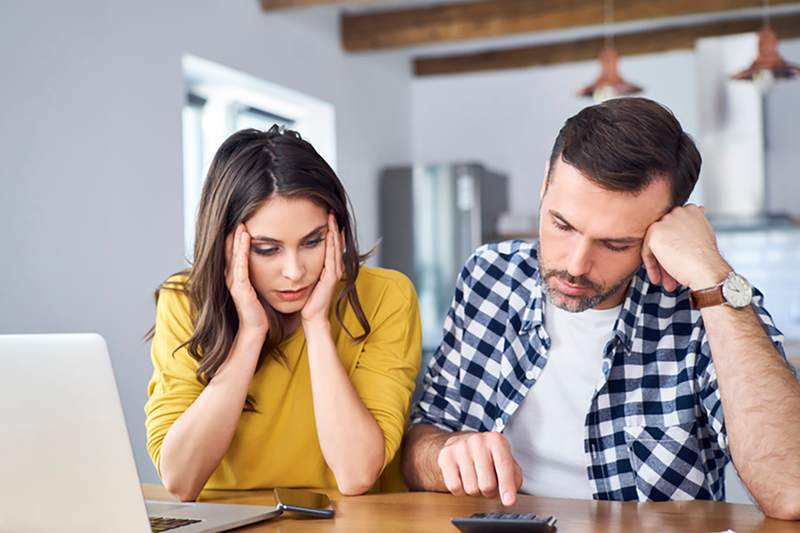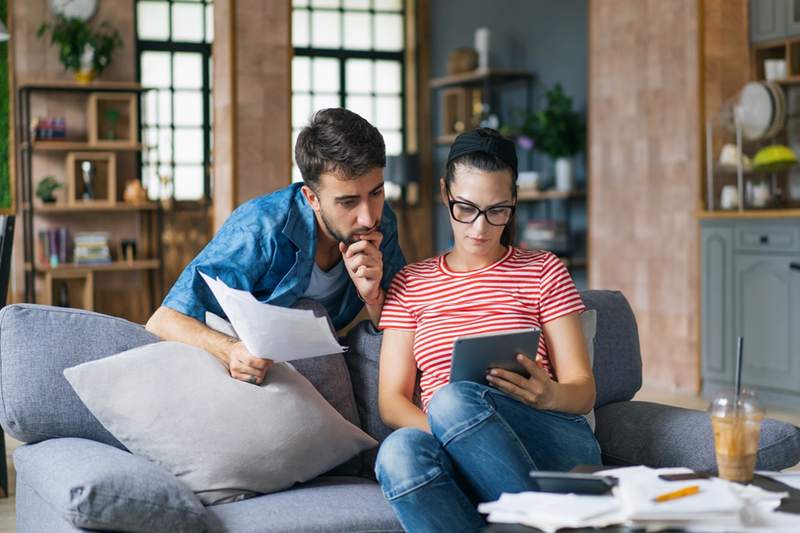If you’re struggling to meet the credit score or down payment requirements for a conventional mortgage, government loan programs offer an alternative that may help you buy, refinance or repair a home. Read on to learn how government home loans work and if one can help you buy, refinance, build or repair a home.
Key Takeaways:
- The U.S. government insures mortgages qualified buyers can use to buy, refinance or repair a home through the Federal Housing Administration, Veterans Affairs and U.S. Department of Agriculture.
- FHA loans set a loan maximum and require a down payment of at least 3.5%, while VA and USDA loans require no down payment.
- All three agencies allow borrowers to refinance their mortgage and loan options to pay for construction and renovations.
What Are Government Home Loans?
Government home loans are mortgages designed to help specific types of borrowers buy, refinance or repair a home.
Qualified borrowers apply for these loans with private lenders, which are reimbursed for their losses if borrowers default. Government loans are less risky for lenders and easier to get for qualified borrowers.
“These loans provide support for buyers who might not qualify for conventional loans due to strict requirements or financial constraints,” says Colten Claus, an associate broker with 8z Real Estate in Colorado Springs, Colorado. “The government offers these loans to make homeownership more accessible, promote economic stability, increase homeownership rates, and support community development.”
What’s Your Goal?
Buy A Home
Discover mortgage options that fit your unique financial needs.

Refinance
Refinance your mortgage to have more money for what matters.
Tap Into Equity
Use your home’s equity and unlock cash to achieve your goals.
What Types Of Government-Backed Loans Are Available?
The most common government loan programs are offered through the Federal Housing Administration, Veterans Affairs and the U.S. Department of Agriculture.
FHA Loans
FHA loans are designed to help borrowers with a lower credit score and less savings for a down payment buy a home.
Here are FHA loan terms and requirements:
- Credit score and down payment. Borrowers with a minimum credit score of 580 need a down payment of 3.5%. Borrowers with a credit score between 500 and 579 need a down payment of 10%.
- Loan limits. The FHA sets a loan limit for single-unit properties of $498,257 in low-cost areas, $1,149,825 in high-cost areas, and $1,724,725 in Alaska, Hawaii, Guam and the Virgin Islands.
- Maximum debt-to-income ratio. The DTI ratio limit is 43%, but it can be as high as 57% for borrowers with qualifying factors.
FHA loans require borrowers to pay mortgage insurance premiums. You’ll make both an upfront payment of 1.75% of the loan amount and an annual amount paid in monthly installments.
VA Loans
VA loans are available only to veterans, active-duty members of the U.S. military, and eligible surviving military spouses. Applicants must have a Certificate of Eligibility and plan to use the home as their primary residence.
Here are the VA loan terms and requirements you’ll need to know about:
- Credit score. No minimum requirement, but lenders may require a credit score of at least 620.
- Down payment. The VA requires no down payment.
- Loan limits. None for eligible borrowers who qualify for the full home loan benefit.
- Maximum DTI ratio. There’s no specific limit, but the VA requires you to have enough income after paying your monthly mortgage bill to afford your other financial obligations.
VA loans require borrowers to pay closing costs, including a one-time VA funding fee, which can be rolled into the loan. The funding fee is between 1.25% and 3.3% of the purchase price, depending on the down payment amount and whether you’re using your VA loan benefit for the first time. Many borrowers, such as those with a service-connected disability, are exempt from paying the funding fee.
USDA Loans
USDA loans are designed to help low-income borrowers who are unable to get a conventional mortgage buy or build a primary residence in an eligible rural area. To qualify, your income must be less than 115% of the median household income in the area where the property is located.
Other requirements for a USDA loan include:
- Credit score. While there is no required minimum, borrowers must show a willingness and ability to repay debts.
- Down payment. No down payment is required.
- Loan limits. No set limits; determined by the ability to repay.
- Maximum DTI ratio. The limit is 41%, but it can be higher to adjust for eligible compensating factors.
“Even though the USDA doesn’t require a certain credit score, you typically need a score of 640 or higher, and buyers must meet certain income restrictions that can vary by region,” Claus says.
Ready To Become A Homeowner?
Get matched with a lender that can help you find the right mortgage.
Is Government-Backed Refinancing Available?
If you already have a mortgage, there are options for refinancing your home with a new government loan.
FHA Refinance Loans
FHA loans come with several loan refinancing options:
- FHA Simple Refinance. This replaces your current FHA loan with a new fixed-rate or adjustable-rate FHA loan. The process is straightforward, and you can roll your closing costs into the loan amount.
- FHA Streamline Refinance. An FHA Streamline Refinance requires no credit check, appraisal or income verification. To qualify, you must have had your loan for at least 210 days and have made at least six monthly payments. You also need to show that refinancing will benefit you with a lower interest rate or monthly payment.
- FHA cash-out refinance. A cash-out refinance allows you to take out a new FHA mortgage based on your home’s current market value and keep the difference between your new loan and your original FHA loan’s balance. You’ll need a minimum credit score of 580, a DTI ratio of less than 43%, and a new home appraisal. You can borrow no more than 80% of your home’s current value.
VA Refinance Loans
There are two primary options for refinancing a VA loan with a new one:
- Interest Rate Reduction Refinance Loan. An IRRRL is a simplified and less expensive way to refinance your VA loan. Also called a VA streamline refinance, an IRRRL can convert an adjustable-rate mortgage to a fixed-rate loan, change your loan term, and lower your interest rate. An IRRRL requires no new appraisal and less documentation for underwriting.
- VA cash-out refinance. A VA cash-out refinance lets borrowers with non-VA loans refinance into a VA-backed loan if they meet the eligibility requirements. You’ll generally need to meet the same requirements as you would for getting a VA purchase loan, which means paying closing costs and the VA funding fee. You can borrow up to 100% of your home’s current value.
USDA Refinance Loans
Homeowners with USDA loans also have the option to refinance their mortgages:
- USDA Non-Streamlined Refinance. This option lets you replace your current USDA loan or non-USDA loan with a new 30-year fixed-rate USDA mortgage. A full appraisal is required, and you’ll likely need a minimum credit score of 640. The maximum loan-to-value ratio is 100%, and income limits apply based on your location and household size. You are allowed to add or remove borrowers from the new mortgage loan. A history of punctual payments over the past 180 days is required.
- USDA Streamlined Refinance. A USDA Streamlined Refinance lets you convert your existing USDA loan into a new 30-year fixed-rate mortgage. A Streamlined Refinance requires no appraisal, and you can roll closing costs into the new loan. The lender will check your credit score and DTI ratio, and you’ll need to demonstrate a history of on-time payments over the previous 180 days.
- USDA Streamlined Assist Refinance. A Streamlined Assist Refinance allows borrowers with little or no home equity to refinance a USDA loan on their primary residence for more affordable payment terms on a 30-year fixed-rate mortgage. No appraisal, income verification, DTI ratio or credit score check is required. The refinance must result in a minimum $50 net reduction to your monthly payment. You may be eligible for this loan once 12 on-time payments have been made on your current USDA loan.
View Your Refinancing Options
Find a refinance lender that will work with your unique financial situation.
Are There Government Home Loans For Construction?
If you want to build a home or buy a fixer-upper, government loans for homes include options to cover both expenses.
FHA Construction Loans
FHA loans can be used for home repairs or construction using the following:
- FHA Construction-To-Permanent Loan. This loan can be used to both buy land and build a home. This is a construction loan when it’s first approved and funded. The lender must approve the contractor and location of the land. Once construction is complete, the loan is converted into a mortgage you pay off like a regular FHA loan.
- Standard FHA 203(k) Rehabilitation Loan. This allows you to buy a home and pay for repairs and structural work with a single mortgage. The rehabilitation cost must be at least $5,000 and the property’s total value must meet the area’s FHA mortgage limit. You’ll need a minimum credit score of 580, and the property must be your primary residence. Renovation work must begin within 30 days and be completed within six months. The funds cannot be used for luxury improvements, such as installing a swimming pool. You must use FHA-approved contractors.
- Limited FHA 203(k) Rehabilitation Loan. With this option, funds can be used for nonstructural repairs up to $35,000. Most of the other requirements of the standard 203(k) apply.
VA Construction Loans
VA-eligible borrowers can take out a loan to buy a home and pay for its construction or renovation with one of two choices:
- VA Renovation Loan. You’ll likely need a credit score of 620 or higher, the work must be completed by a licensed contractor, the home must be your primary residence, and the total loan amount cannot exceed the appraised value plus renovation costs. Other VA eligibility requirements apply.
- VA Construction Loan. This loan can be used to build and buy a new home. Most of the same requirements as above are applicable.
USDA Construction Loans
USDA loans can be used for home repairs or construction via two options:
- USDA Single-Family Housing Repair Loans And Grants (Section 504). This program offers grants and loans to repair, improve and modernize USDA-eligible homes. The property must be your primary residence. Loans are repayable over 20 years at a fixed interest rate, while grants are available to homeowners aged 62 or older. The maximum loan amount is $40,000, and the maximum grant amount is $10,000. Loans and grants can be combined for up to $50,000 in assistance. Income limits apply.
- USDA Single-Family Housing Guaranteed Loan Program. This is the standard USDA home loan, which can be used to buy and rehabilitate a qualified home in an eligible rural area that is your primary residence. The total loan amount cannot exceed the appraised value plus rehabilitation costs.
What Are The Pros And Cons Of Government Home Loans?
Government-backed home loans come with plenty of perks and a few downsides.
Government Home Loan Pros And Cons
| Pros | Cons |
|---|---|
| Lower credit score requirements. | Additional costs in the form of upfront funding fees and mortgage insurance premiums. |
| No or low down payment requirements. | Ongoing annual mortgage insurance premiums and funding fees may also apply. |
| Easier to refinance. | Additional application requirements. |
| It may come with a lower interest rate than other types of home financing. | Additional underwriting and appraisal requirements. |
| Available to first-time buyers. | Not every borrower or type of property will qualify. |
| You may be able to roll closing costs into the loan amount. | |
| Most government loans for homes are assumable, meaning the next buyer can take over your existing loan. |
FAQ
Here are answers to common questions about government loans.
The Bottom Line
The U.S. government offers several loan programs to help people buy, refinance or build homes. These loans offer flexible terms for aspiring home buyers who are having trouble meeting the requirements for a conventional loan, or who fit the specific requirements for a VA or USDA loan. Understanding how government loans work and who’s eligible for them can make it easier to decide which loan is right for you.
More From Quicken Loans:
Jamie Johnson contributed to the reporting of this article.

Erik J. Martin
Erik J. Martin is a graduate of Loyola University Chicago and a freelance writer whose articles have been featured in AARP: The Magazine, Reader's Digest, The Costco Connection, The Chicago Tribune, Los Angeles Times and other publications. He often writes on topics related to real estate, personal finance, technology, health care, insurance and entertainment. He also publishes several blogs, including Martinspiration.com and Cineversegroup.com, and hosts the Cineversary podcast.












